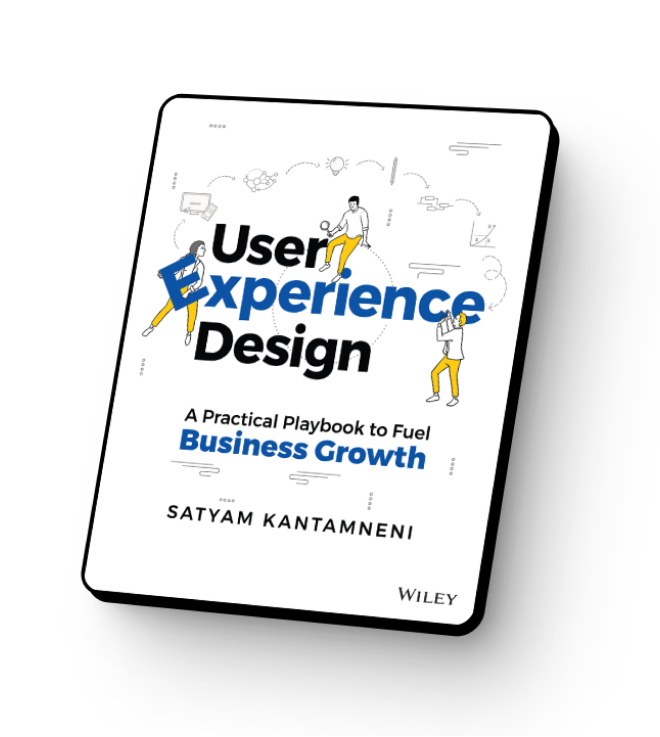You’re a believer in the power of user research to transform product experiences. But despite your passion and persistence, you face an uphill battle getting stakeholders to fully appreciate its value. It’s equally challenging as it is necessary.
According to a survey, the number one challenge UX teams face is the inclusion of UX research within the product-development process. And at the same time, a McKinsey study found companies with a higher design score outperformed industry benchmark growth by as much as two to one.
This much is clear: User research is necessary for a user-centric product. And it’s imperative that everyone get on board. But where do you start? We have the answers to help you change minds, gain support, and ensure UX research is recognized as the strategic foundation it is for any successful product.
Connect User Research Findings to Your Stakeholders’ Priorities
Gaining buy-in for user research requires putting yourself in the shoes of your organization’s key decision makers and what matters most to them. Once you know what their impact drivers are, you can align your research priorities with business strategy and goals.
But how do you bridge the gap between the insights from your user research and the business goals and strategy your stakeholders care about? Enter: The Portfolio of Insights. This research framework answers key questions about the user experience throughout the life of the product. It’s where your product strategy should start and continually come back to. Insight to include are:
- Formative research (also referred to as discovery research) which focuses on discovering user needs early on to identify the right product opportunities through ethnographic and exploratory methods. Helpful for: Executives who determine where the company should allocate resources and priorities.
- Summative research (also referred to as design validation research) to validate proposed solutions with users. This allows you to assess if you’ve built the right product the right way. Helpful for: Product teams engaged in iterating on designs and user experiences.
- Sensorial research (also referred to as UX measurements) leveraging usage data and instrumentation to sense how real customers are interacting with launched products. Helpful for: CEO and senior leaders who need to know whether or not the product works as intended.
When UXReactor managing partner Satyam Kantamneni developed this framework, he said, “Design leaders should invest proportionally in all three parts of the portfolio. This way, they won’t get caught in the trap of only solving for today’s need, and then get undercut by a competitor who is able to identify an unmet customer need and build a whole business of it.”
Establishing a Portfolio of Insights isn’t enough to showcase all the doors your research can open. You have to continually maintain good data hygiene as well. To manage your findings from each stage of research, as well as how they align with the business strategy, and any lessons learned, use our 5 V Framework.
The most valuable insights will be different from department to department and role to role, as well as the maturity of your organization. But by investing appropriately across this portfolio, you can deliver impactful data tailored to everyone’s unique priorities, gaining trust and building confidence along the way.
From AI Tools to Mixed Methods: Conduct Quick User Research
It can take a long time to gather insights from traditional user research methods. That’s not ideal when user needs are constantly changing and the market is so competitive. You need to be able to deliver insights to inform decision making fast. Luckily, there are many ways to be flexible and rapidly iterative–just like designers, you have to get creative.
Use mixed methods, modify techniques, and discover new user research tools to answer key questions in a time and budget-friendly way. Bend the formal methodologies you’re used to while still ensuring data quality. (We’ll sign your permission slip.)
Here are some different moderated and unmoderated approaches to try.
- Use AI-powered tools to help with everything from recruiting to data transcription to…facial coding? Yep. The possibilities are endless. NLP algorithms can identify common themes from open-ended feedback and transcriptions.
- Conduct focused online surveys to identify critical user pain points, then validate the top two or three issues with a small set of minute interviews.
- Capture on-demand video feedback from users with tools like UserTesting and Validately that you can review in a matter of days.
Getting creative doesn’t mean throwing away principles of rigorous inquiry. But by leveraging the latest in LLM technology, mixing and matching methods, and modifying your techniques, you can prove gathering research doesn’t have to be a long endeavor.
Use the Rich User Research Insights You Already Have
If your organization hasn’t yet realized the value of user research, it’s likely you’re working with a lean budget. That means you have to get creative to gather data and mine it for insights—and you can do that by tapping into team members you don’t typically work with.
Your friends in different department have a wealth of knowledge waiting to be leveraged, so break down the silos insulating your focus areas. Create a community of camaraderie, learn from each other, and work together to fulfill the goal of designing a user-centric product. For example:
- Meet with technical teams to gather data analytics. Certain patterns can prioritize your next move.
- Seek out sales and support teams to learn what current users are saying. What feedback do they hear in the sales cycle? What features do customers want to see?
- Get on the same page with marketing to ensure you understand your target user’s motivations, needs, and latent desires. How does the research match up with what you think you know? It’s a good thing when assumptions are challenged; it means there’s an opportunity to dig deeper.
- Create a cadence for consolidating data with a wide range of teams to paint the “big picture.” Why is everyone showing up to work every day? What is the reason everyone is contributing to building a sticky, user-centric product in the first place?
Finally, get as many people involved in the user research as possible—the testing questions, the methods, the data. Not only will different perspectives make the research holistic, but you’ll also get believers in the process.
User Research: The Ultimate Strategic Driver for User-Centric Products
The cost of fixing an error after development is 100x that of fixing it before development. This error could be any number of things: A disjointed onboarding process, audience messaging that misses the mark, a feature shipped a little too fast. Investing in user research is investing in risk mitigation.
With a robust Portfolio of Insights and a toolbox of strategies to get the best bang for your research buck, you can be confident that the value of the research is appreciated and risk is reduced. You can transform the notion that it’s a “nice-to-have” into a powerhouse of potential—a non-negotiable for any user-centric product.
Whether you need help winning over the skeptics, or you want to take your user research to the next level, we can get your product where it needs to be. We’re ready when you are.


